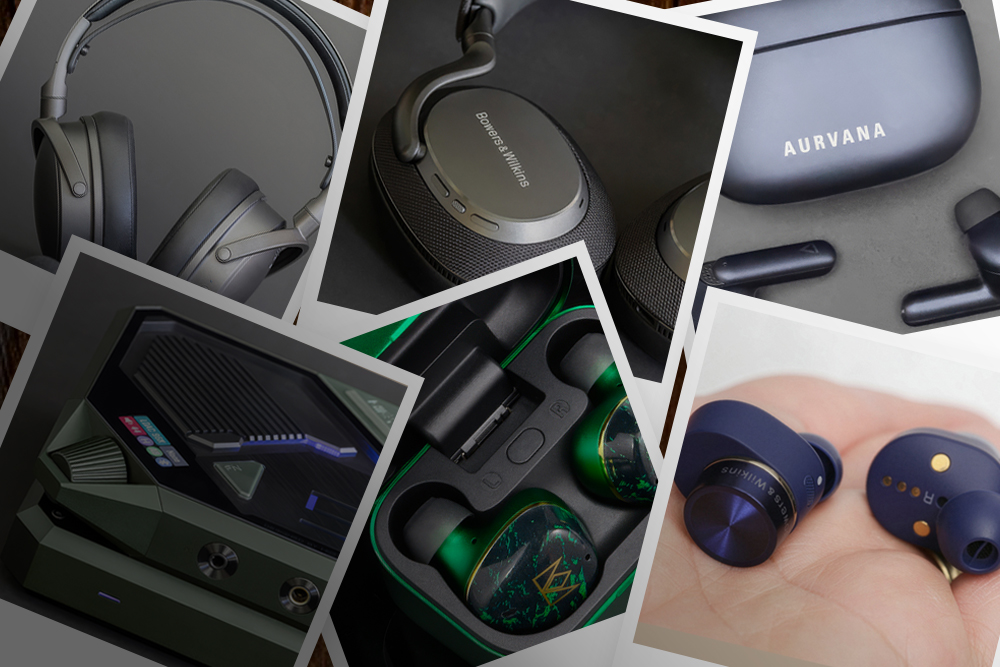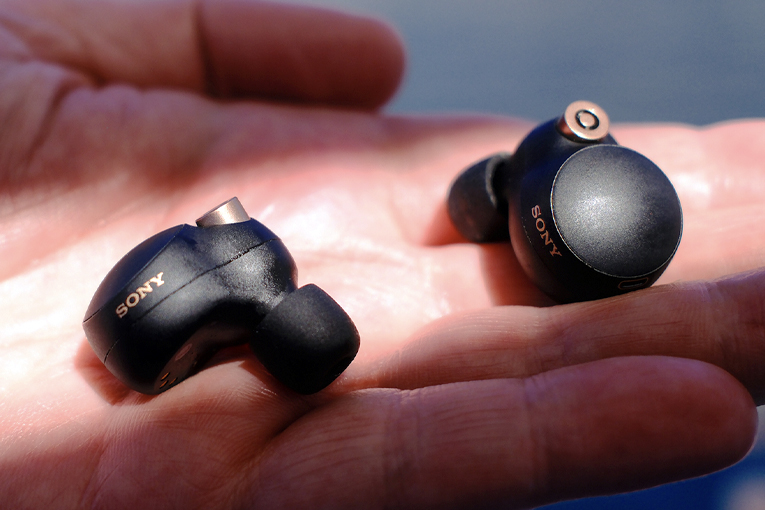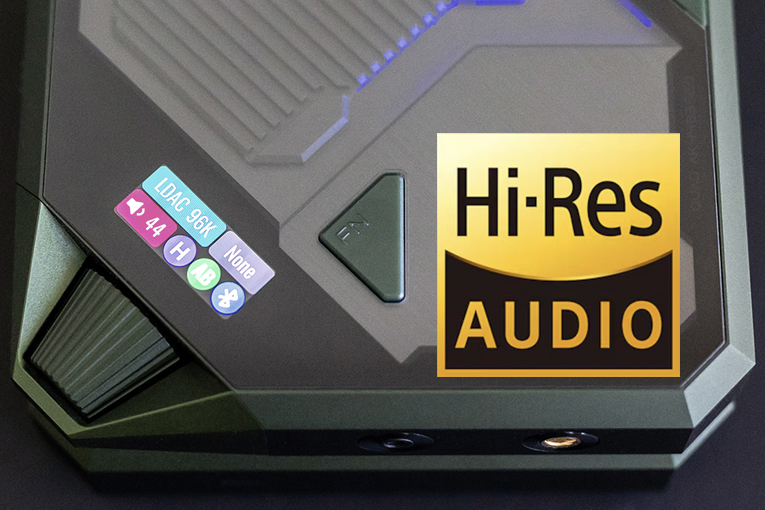Features

- Details
- Written by: Geoffrey Morrison
The SoundStage! Network has just announced the winners of our Product of the Year awards, along with three new recipients of our Outstanding Achievement awards. Cruise on over to SoundStage! Hi-Fi for a full list of winners, or check out the video presentation on our YouTube channel. Among the award winners are two headphones and two earphones, one each in the Outstanding Performance and Exceptional Value categories, and all reviewed during 2025 on SoundStage! Solo. Suffice it to say they’re all great.

- Details
- Written by: Geoffrey Morrison
In an announcement that would have been shocking if it hadn’t been rumored for years, Spotify finally has lossless audio. As long as you pay for the Premium tier, you can select Lossless Audio Quality even on mobile in most regions. It’s the last of the big-name music-streaming services to offer lossless.

- Details
- Written by: Geoffrey Morrison
I’m writing this on my last flight of a two-month trip around the world. It started in Japan in July—which I’ve already written about. It’s ending now after I spent some time in New Hampshire and Maine with my dad. As I’ve done for the last several years, I brought with me the Sony WF‑1000XM4 earbuds. I love their sound, and their noise canceling is very good. They’re fantastic, or should I say, they were fantastic. Sadly, the XM4s are not long for this world.

- Details
- Written by: Geoffrey Morrison
Deep in the heart of Tokyo is a legendary neighborhood. Well, to be fair, there are a lot of legendary neighborhoods in Tokyo, but this one has special interest for tech nerds like us. Its actual name is Akihabara, but it’s better known by its nickname: Electric Town. It has long been a hot spot for gadgets of all kinds, big and small. During the Japanese electronics boom of the 1980s, it was said you’d be able to find rare, often Japanese-market-only devices. You also might be able to nab gear that wouldn’t be available elsewhere in the world for months or maybe years.
Read more: The Rise and Fall and Maybe Rise Again of Akihabara Electric Town

- Details
- Written by: Geoffrey Morrison
There is a place that all gearheads and tech nerds must visit at least once in their lives. A store so epic, so incredible, that it almost defies description. To put it broadly, imagine if an entire Best Buy (or your local electronics store) was dedicated to what is now just one section within that store. Then you stack eight floors on top of it, each with its own focus. So an entire Best Buy’s worth of space just for TV/AV. Above that, an entire Best Buy’s worth of space just for cell phones, and so on. Add in a floor for clothes, a floor with a food court, and suddenly you start to get the idea. It’s like an entire mall’s worth of floorspace dedicated to tech and other gear.

- Details
- Written by: Geoffrey Morrison
Last month, I wrote about a new streaming service that promises high-resolution, lossless audio. The main difference between Pure Audio and all the other streaming services that offer high-resolution, lossless audio is its focus on spatial audio. Fair enough.
- Is There Space for Another Music-Streaming Service?
- Bluetooth in the Sky
- The Power of Nostalgia
- Fire and Music
- MEMS!
- Headphones 2025 and Beyond
- Don’t Call It a Gift Guide
- Do You Care About Features?
- The Constancy of Change (Goodbye, Sound & Vision)
- Is Accuracy the Only Option?
- The Opposite of Headphones
- The Death and Immediate Rise of MQA (Again)
- How Terrible Is Temu?
- The Delightful Weirdness of Open Earbuds
- The Formats Time Forgot
- The Return of the Cassette
- Do You Need a Headphone Amp?
- The Highs and Lows of the Consumer Electronics Show
- 2023: A Year in Headphones (and Other Stuff)
- Perfect Noise Canceling?
- The Rise and Fall and Maybe Rise Again of MQA
- Have Your Music Tastes Changed?
- Beware AI “Reviews”
- Six Months In
- Why Do People Think Headphones Are Magic?
- Recalibrating the Ears
- Is There Such a Thing as a Perfect Pair of Headphones?
- Everyone Should Own These Headphones
- What is the Soundtrack to Your Life?
- The Endless Hassle of Connecting to In-Flight Entertainment
- In-Ear vs. Over-Ear for Travel
- Traveling as an Audiophile
- Greetings!
- A Fond Farewell
- When Is the Amp Important?
- Evaluating the Knowles Preferred Response Curve
- Do We Really Need All These Target Curves?
- The Problem with Hearing Correction in Headphones
- RF: A Phantom Menace?
- Understanding Current
- The Big Mistake Many Headphone Makers Keep on Making
- How Consistent Is the Quality of Headphones and Earphones?
- David Chesky’s New New Revolution in Headphone Sound
- Why You Shouldn’t Always Rely on Measurements
- The Shocking Truth About Truck-Stop Earphones
- Are There Valid Objections to the Harman Curve?
- Is It Possible for Headphones to Sound Fast? (Or Slow?)
- The Four Things that Recording an Album Taught Me About Audio
- What Playing Music Taught Me About Audio
- Voicing Headphones, Part 3: Campfire Audio's Ken Ball and 64 Audio’s Vitaliy Belonozhko
- The #1 Red Flag in Audio Articles, Ads . . . and Everything Else
- How Not to Go Deaf from Headphone Listening
- What’s the Future of High-End Headphones?
- How Audio Writers Are Killing the Audio Industry
- Why Buying High-Quality Headphones Is a More Responsible Purchase
- Does It Make Sense to Demo Audio Over the Internet?
- The New Standard That Killed the Loudness War
- Headphones 2020: The Year in Review
- Three Cases Where Measurements Didn’t Work
- How Much Can We Really Tell From Listening?
- Balanced Armatures: Why You Might (or Might Not) Want Them
- The Coming Revolution in Headphone Sound Quality
- Can Accuracy in Music Reproduction Exist?
- The Biggest Lie in Audio
- Voicing Headphones, Part 2: HiFiMan’s Fang Bian and Focal’s Mégane Montabonel
- What Will the Next Generation of Headphones Be Like?
- How Far Have Headphones Come?
- Voicing Headphones, Part 1: PSB/NAD's Paul Barton and Dan Clark Audio's Dan Clark
- How Will Headphone Testing and Reviewing Change in the 2020s?
- What the AKG K371 Headphones Tell Us About "Slow Listening"
- Where Are We At With The Harman Curve?
- Why Headphone Amps Are More Interesting Than Speaker Amps
- 2019’s Most Important Headphone Presentation
- Noise Canceling Is Much More Complicated Than We Thought
- How Does Aging Affect Audio Perception?
- Noise-Canceling Headphones for 17 Cents?
- Is Chesky Dumping Binaural?
- Why My Fi Ain't Hi-Fi
- Latency: A New Concern for Audiophiles?
- How to Read Our Headphone Measurements
- Eardrum Suck: The Mystery Solved!
- Should Audio Gear be Considered Luxury Goods?
- Headphone Equalization Using Measurements
- Why Is It So Hard to Rate Headphones?
- Five Things Headphone Enthusiasts Get Right (and That the Two-Channel Guys Get Wrong)
- The Best Possible Way to Test Audio Products (and Why Most People Don't Do It)
- Will aptX Adaptive Improve Headphone Sound?
- Is the miniDSP EARS the Death of Headphone Measurement? Or its Savior?
- What Are Measurements Good For?
- How Much Noise Do Your Headphones Really Block?
- Why We're Launching "SoundStage! Solo"
SoundStage! Solo is part of
All contents available on this website are copyrighted by SoundStage!® and Schneider Publishing Inc., unless otherwise noted. All rights reserved.
This site was designed by Karen Fanas and the SoundStage! team.
To contact us, please e-mail info@soundstagenetwork.com




